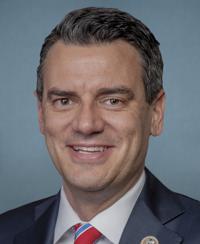(Correction: In the recent issue of Mailers Hub News, Issue #181, former Congressman Kevin Yoder was incorrectly identified as Dennis Yoder.)
In a recently publicized May 17 letter to the chairman and ranking member of the House Subcommittee on Government Operations and the Federal Workforce, former Congressman Kevin Yoder, now Executive Director of Keep Us Posted, questioned the economic assumptions of the Postmaster General’s 10-Year Plan.
Citing an economic analysis of The Plan “prepared by NDP Analytics and commissioned by the Greeting Card Association,” Yoder offered several key takeaways:

“1. The USPS’s base year estimates in the DFA are inaccurate. The USPS underestimated total mail volume by nearly 13 billion pieces for the base year of the plan, throwing off the entire USPS projection for both volume and revenue.
“2. Market-dominant mail fueled USPS revenue gains in FY2021-22 without excessive rate increases, contributing to better financial performance than projected under the DFA. In FY2021-22, higher-than-projected volume contributed to higher revenue for market-dominant products ($8.1 billion over two years). This revenue improvement led to better financial outcomes for the USPS during this period.
“3. After back-to-back rate increases under the DFA, USPS mail volume is starting to decline at a faster rate in FY2023, compromising revenue and overall financial stability. Year-to-date, market-dominant mail volume and revenue have started to decrease at a faster rate than in prior years and are underperforming expectations.
“4. Competitive products are not growing as expected under the DFA. Year-to-date, USPS’s competitive product volume, and revenue growth rates are below the levels predicted in the DFA. Despite its underperformance, the USPS is reducing rates for competitive products while raising rates for market-dominant mail and investing $40 billion in capital improvements which largely focus on package growth.
“5. Efficiencies expected under the DFA have not been realized. USPS costs have overrun the plan’s projections. Recent data suggests that the DFA’s efforts to cut costs have not materialized. While inflation has increased costs, USPS labor productivity has declined, indicating that the USPS has not improved its operational efficiency.
“6. Economic conditions have changed since the development of the DFA. The economic assumptions, especially for inflation, used to create the DFA projections are outdated.”
In conclusion, Yoder stated

“Taken together, these findings present enormous challenges for the long-term financial stability of the USPS. They indicate that changes are needed while the benefits of the Postal Service Reform Act can still be fully realized. We respectfully ask the subcommittee to consider an additional hearing on the health of the USPS customer base in light of the likely failure of the plan to achieve a break-even outcome in FY2023.”
As interesting as the facts of Yoder’s letter may be, and as much as his expressed concerns about mail volume and the financial status of the USPS may be, it’s unlikely that the Postmaster General’s political allies in the House will do anything to impede his headlong pursuit of what his Plan proposes – especially semi-annual price increases. Short of Congressional intervention, only the USPS governors can influence the PMG’s actions and policies, but their somnolent acquiescence to his wishes is unlikely to change anytime soon.

